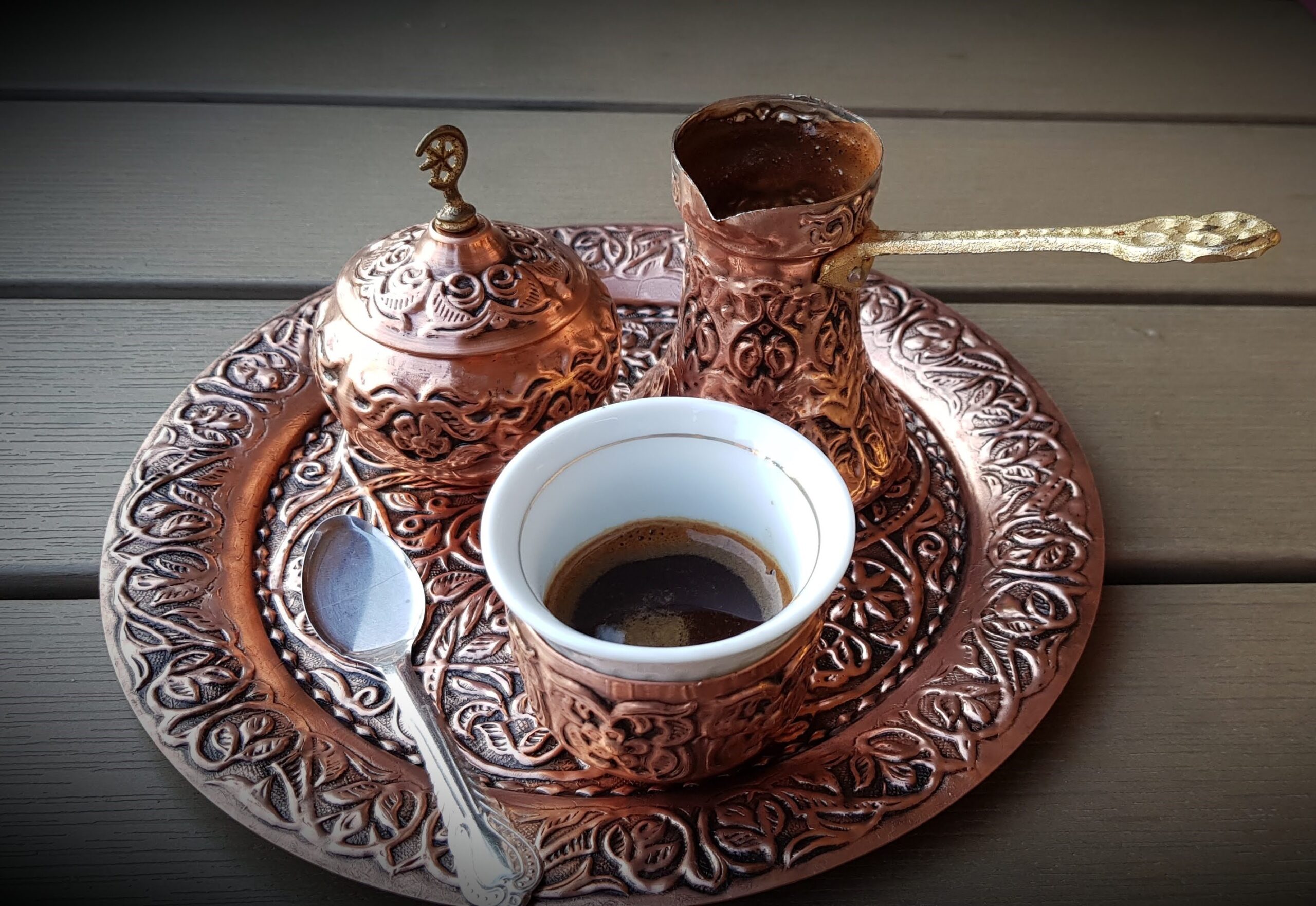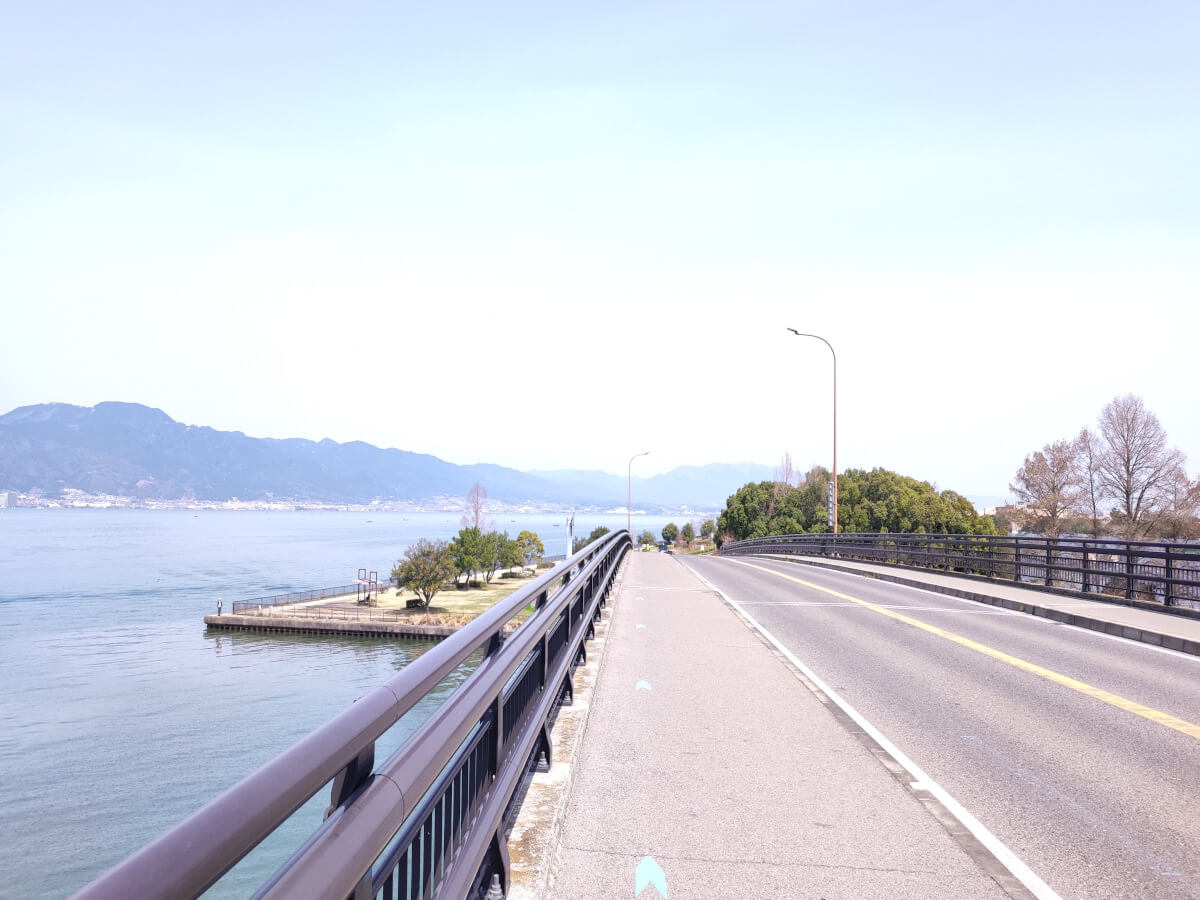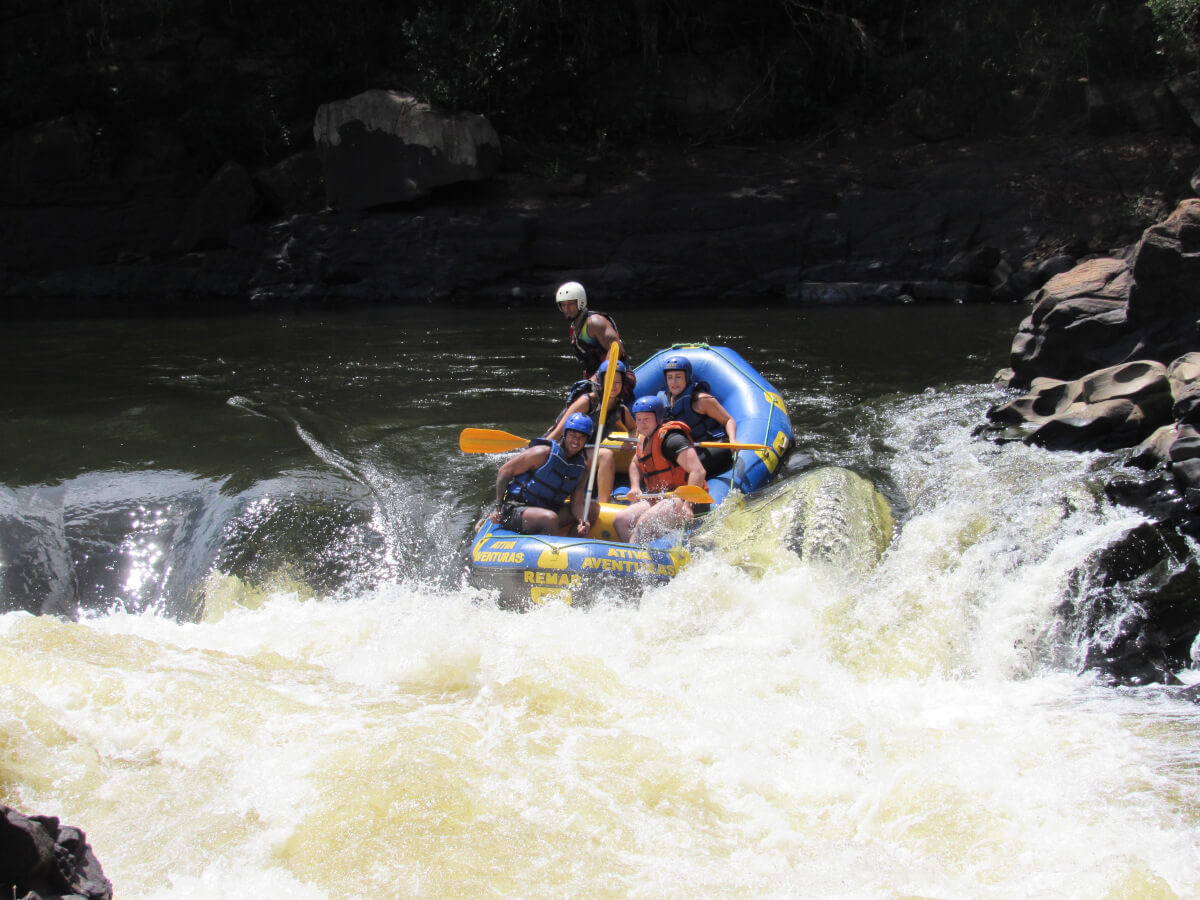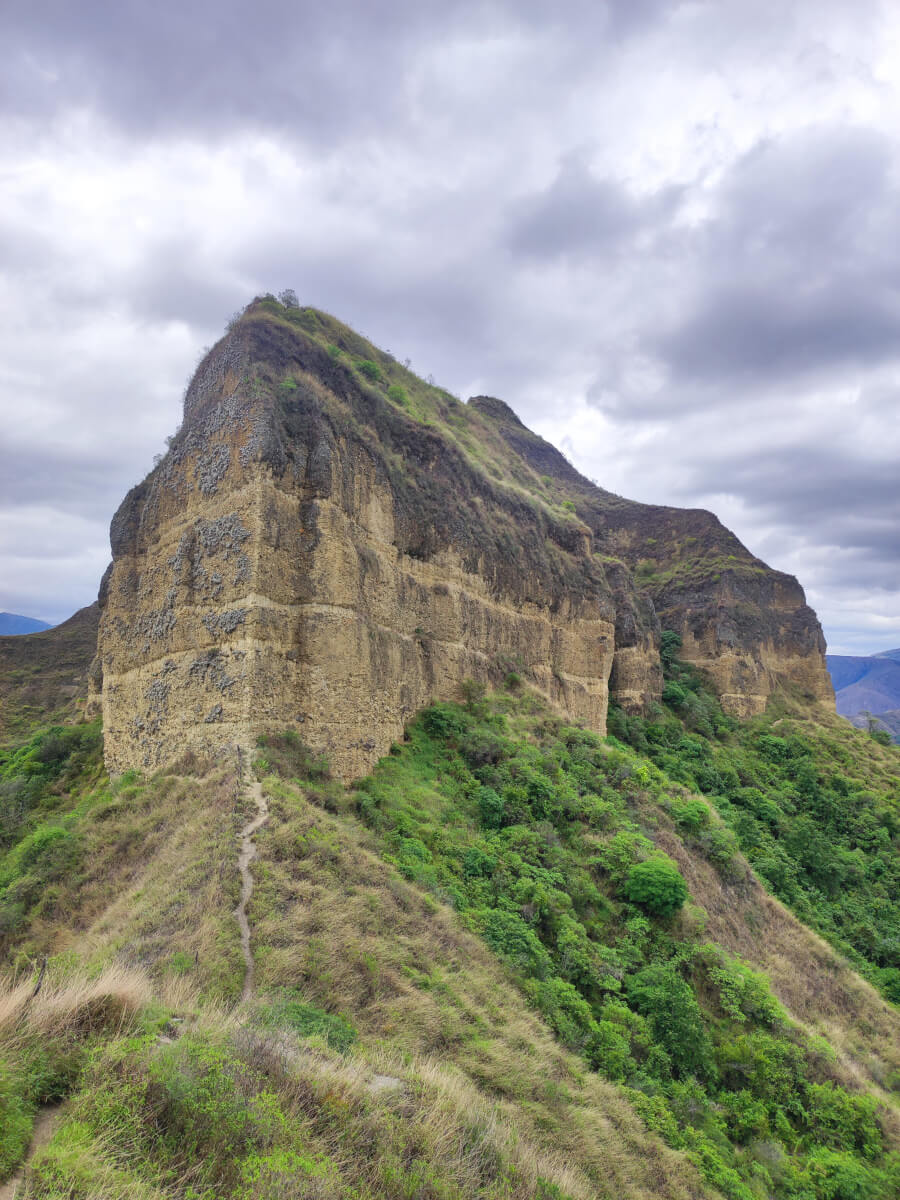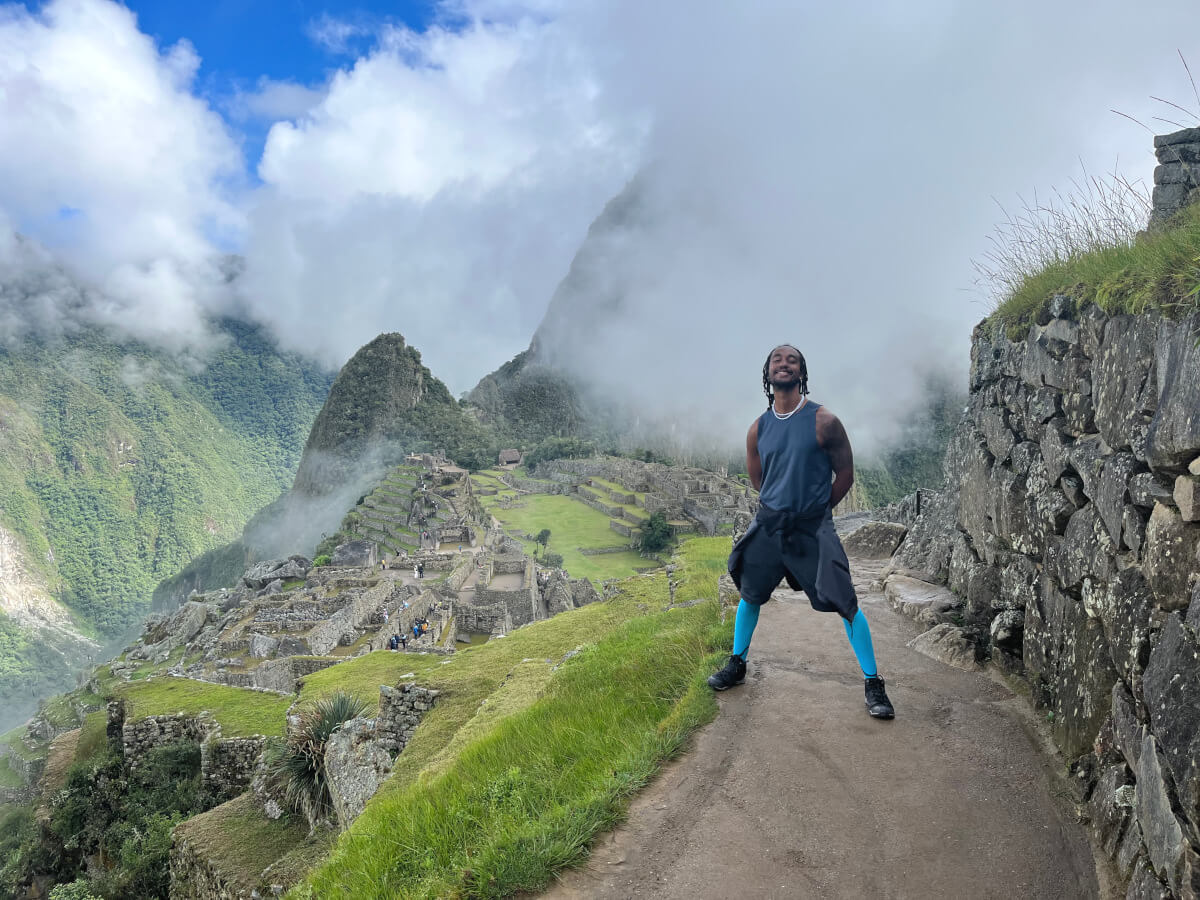If you’re looking for adventure and spectacular landscapes, Peru offers some of the best hikes in the world. In this post, we’ll explore the best hikes in Peru, from high-altitude treks to forests and ancient ruins, showing the country’s diverse scenery.
If you’re interested in multi-day journeys or challenging day hikes, there are many places to explore. These routes will take you through some of Peru’s most iconic landscapes.
Among the highlights we’ll cover are the Salkantay Trek, a fantastic alternative to the Inca Trail with beautiful mountain views; the Colca Canyon, one of the deepest canyons in the world; the epic Choquequirao Trek, which leads to a lesser-known Incan site; and the Santa Cruz Trek, a classic hike in the Cordillera Blanca.
Each of these hikes offers something unique, allowing you to connect with Peru’s natural beauty while experiencing unforgettable adventures.
Stay tuned as we dive into the details of each of these incredible trails, helping you plan your next hiking adventure in Peru!
Table of Contents
Salkantay Trek
One of the most famous alternatives to the Inca Trail, the Salkantay Trek, is one of the best treks I have enjoyed exploring in my life!! The highlight of this adventure is that the journey takes you through diverse landscapes each day.
The landscapes are so diverse that you will feel like you have gone on different hikes in different places each day. The Humantay Lake and the Salkantay Pass are the most iconic places to visit.
From the trail near the snowy peak, at the highest point of this trek (4,630m) is Mount Salkantay (6,271 meters). From there, the trek descends into several valleys before reaching the ancient city of Machu Picchu.
This adventure lasts five to six days, and you will hike around 96 km with views of glaciers, lakes, and lush vegetation. Along the way, you’ll slowly feel Inca vibes and nature as you get closer to the ancient city of Machu Picchu. The Salkantay Trek is ideal for adventurers seeking dramatic scenery and a rewarding end at Machu Picchu.
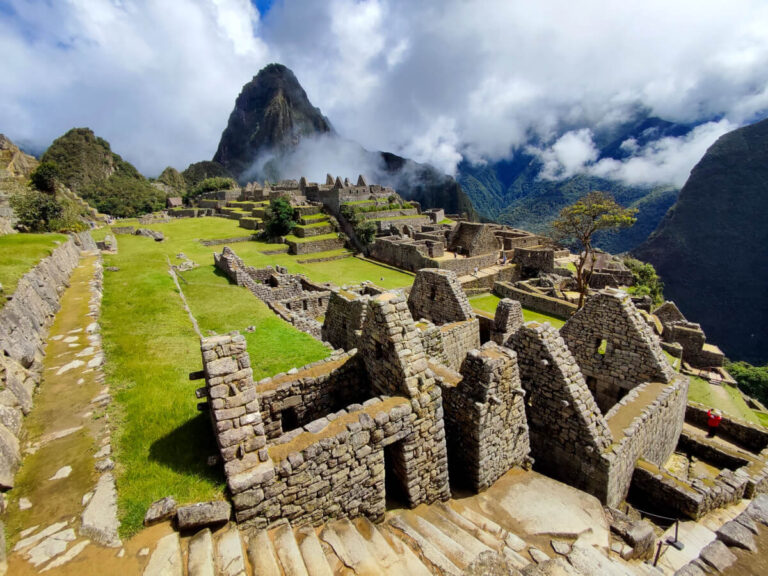
Choquequirao Trek
For those looking to explore Peru’s hidden archaeological gems, the Choquequirao Trek is the top off-the-beaten-path adventure of this post. This challenging three-to-four-day trek covers around 60 km and leads to the lesser-known ruins of Choquequirao, often referred to as the “sister city” of Machu Picchu.
Choquequirao offers a great peak in the ancient Inca civilization. The archaeological site was the last place populated by the Incas after the Spanish invasion. Not only the Inca architecture is remarkable, but also the views of the surrounding Apurímac Valley.
There are different ways to complete this trek, and preparing for steep uphills is essential. Make sure to have enough time to explore the archaeological site; it’s enormous, and it will take a lot of time to lose yourself in it.
I recommend setting aside a minimum of four hours to immerse yourself fully in Choquequirao. The trek itself is physically demanding, with steep ascents and descents, but the opportunity to explore these untouched ruins makes it one of the best hikes in Peru. This trek is not touristy; during my explorations, I met less than 10 people in the entire archaeological site.

Balcon del Diablo
For a shorter but exciting hike near Cusco, the Balcon del Diablo provides a perfect opportunity to start getting acclimatized to the high altitude of the Cusco province. As high altitude is a big topic in Cusco, I recommend this hike to be the first one before facing other hikes and treks.
This hike takes you to a hidden Inca site known as the Devil’s Balcony, a natural rock formation used as a ceremonial center by the Incas. The hike is easy-moderate, with beautiful views of the Andes.
You can extend this adventure by combining a visit to the Moon Temple and Sacsaywaman at the end, resulting in a 14km hike. The highlight is reaching the balcony, where you can look through the natural stone archway into the canyon below.
You can also walk inside the rocks and cross the river to the other side. It’s possible to cross the rock using the cellphone flashlight; if you have a flashlight, it’s even better. It’s also an ideal half-day hike for those short on time but looking for a memorable experience.
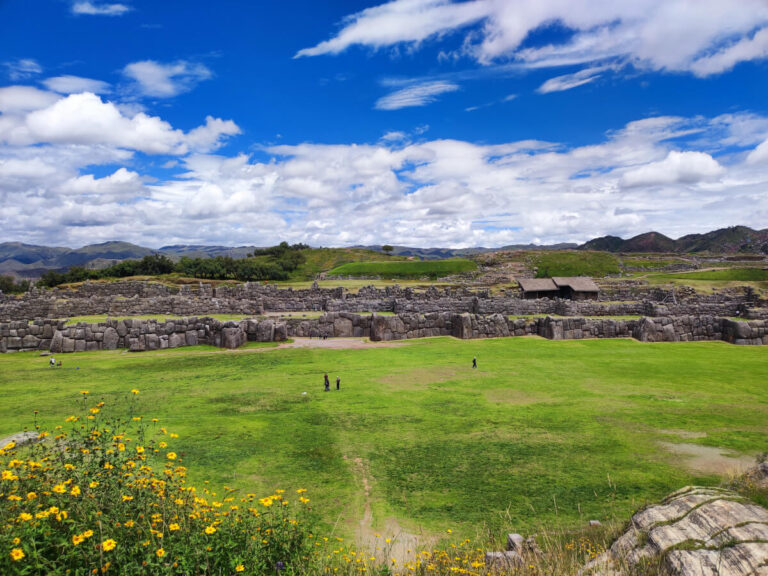
Inti Punku (Sun gate)
The Inti Punku hike, or Sun Gate, near Ollantaytambo, is a rewarding day hike offering beautiful views and a peek into ancient Incan history. Known as the gateway to Machu Picchu, this site is part of the Inca Trail Trek. The hike is moderate but be prepared for high sun exposure along the trail and steep climbing.
Sun protection is essential on this hike, as there are no shades along the way. Make sure to bring sunscreen, a hat, and plenty of water to stay hydrated. The elevation and exposure to the sun can be intense, especially during midday, so plan accordingly to start early in the morning.
Getting to the Inti Punku is fairly straightforward. You can catch one of the many colectivos (minivans) that frequently depart from Cusco or Pisac throughout the day. These colectivos are an affordable and convenient option, dropping you off near the trail’s starting point in Ollantaytambo.
Once you reach the top of the Sun Gate, you will be rewarded with incredible panoramic views, including a distant but incredible sight of Machu Picchu, if the weather allows it. The gate offers a unique view of iconic ruins at the top, making the effort to hike more worth it.
Overall, the Inti Punku near Ollantaytambo is a perfect day hike for ecotourists looking to see beautiful views, adding historical value to the experience.
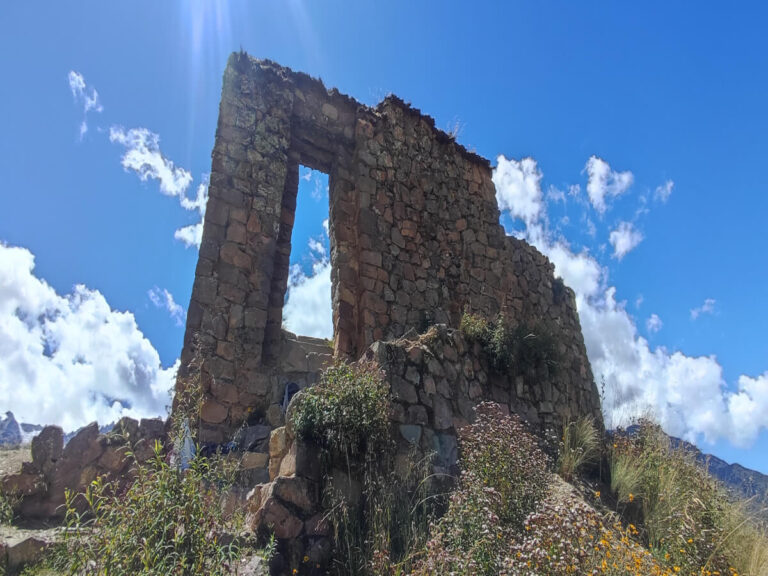
Thinking about flying to Peru? Check flight options on Kiwi, it's my favorite way to book plane tickets:
Colca Canyon
Twice as deep as the Grand Canyon, the Colca Canyon is one of Peru’s most impressive natural wonders. A trek through the canyon usually takes 2-3 days and offers stunning views of the canyon’s walls and opportunities to spot the Andean condor.
Several agencies offer tours from Arequipa to explore the canyon, but honestly, it is much better to go there by yourself if you can. The main reason why I don’t recommend agencies is their tours are too rushed, and you won’t be able to immerse yourself in the beauty of the canyon. Once you are there, you will understand why this place is one of the best hikes in Peru, the nature in the canyon is very unique!!!
I only recommend doing this trek with an agency if you are short of time and can’t afford to spend 3-4 days to complete this adventure.
The trail leads adventurers through villages and an oasis, all surrounded by mountains. Along the way, you’ll experience the unique cultural traditions of the local communities that have inhabited the canyon for centuries.
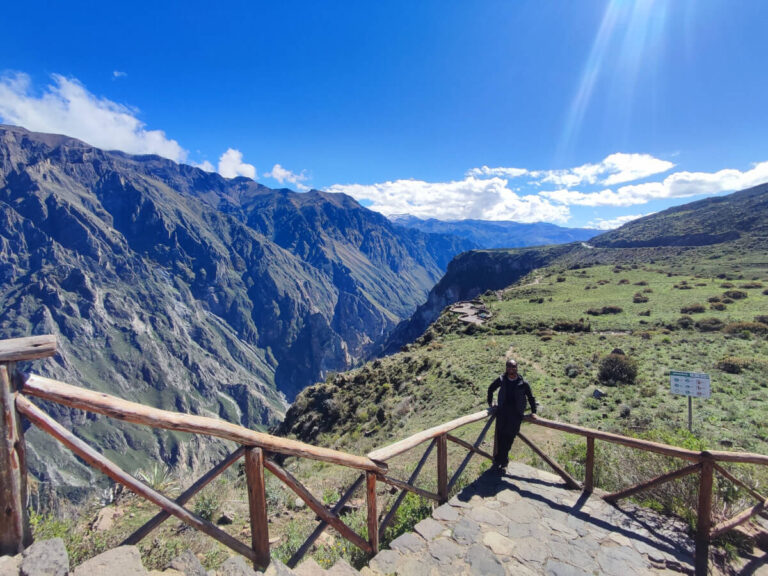
Laguna 69
The hike to Laguna 69 near Huaraz is challenging due to the steep climb, but the rewards are worth it. The trail takes you through diverse landscapes, with lush valleys, waterfalls, and wildlife along the way. It’s a tough but essential adventure if you want to experience the best hikes in Peru.
While most hikers base themselves in Huaraz, I found staying in Caraz was a better option. The town is calm and near the trailhead and other places, allowing you to combine the Laguna 69 hike with other hikes nearby.
The lake’s bright blue color is caused by suspended glacial minerals reflecting sunlight. This natural phenomenon and the high-altitude setting create all the beautiful pictures you can see on the internet.
As you approach Laguna 69, you’re surrounded by snow-capped peaks, including Nevado Pisco and Chacraraju. These mountains provide a breathtaking scene that makes the final steep climb more rewarding. The contrast between the snowy peaks and the turquoise water of the lake is a sight you won’t forget.
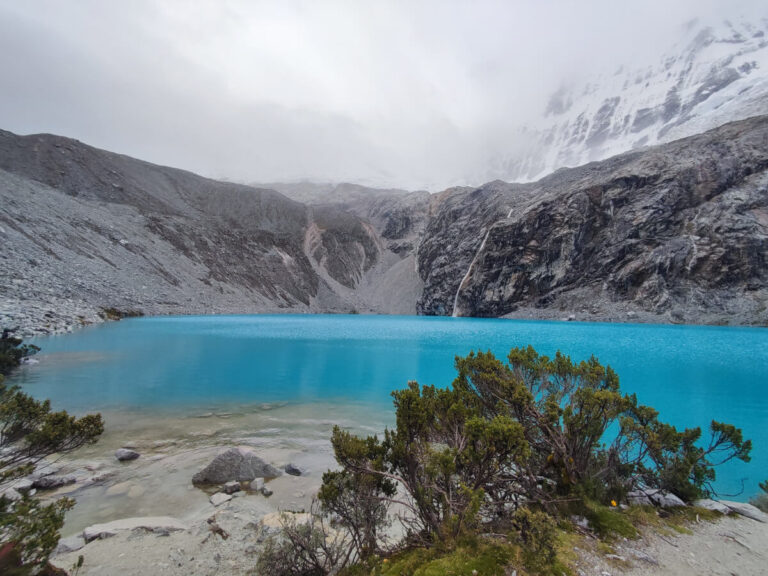
Lake Shallap
Lake Shallap, also located near Huaraz, offers a peaceful, non-technical hike of 23 km. The trail is long but simple to follow, making it accessible to most ecotourists, though the distance can be challenging for some. Along the way, you’ll encounter many cows pasturing in the Andean fields, adding a rural charm to the scenery.
The lake’s impressive green color results from algae and glacial minerals suspended in the water. This natural phenomenon gives Lake Shallap a unique color that contrasts nicely with the surrounding mountains. The hike’s remote feel and scenic beauty make it one of the lesser-known gems among the best hikes in Peru.
During my experience there I met only 3 people all day!! If you are looking for a non-touristy place to explore, give it a try to this lake.
An entrance fee is required to access the lake, but I didn’t encounter anyone asking for tickets during my visit. However, it’s always good to carry some money just in case. It’s important to note that the trail offers no water sources, so bringing enough water is essential unless you have a good filtered water bottle to use at the lake.
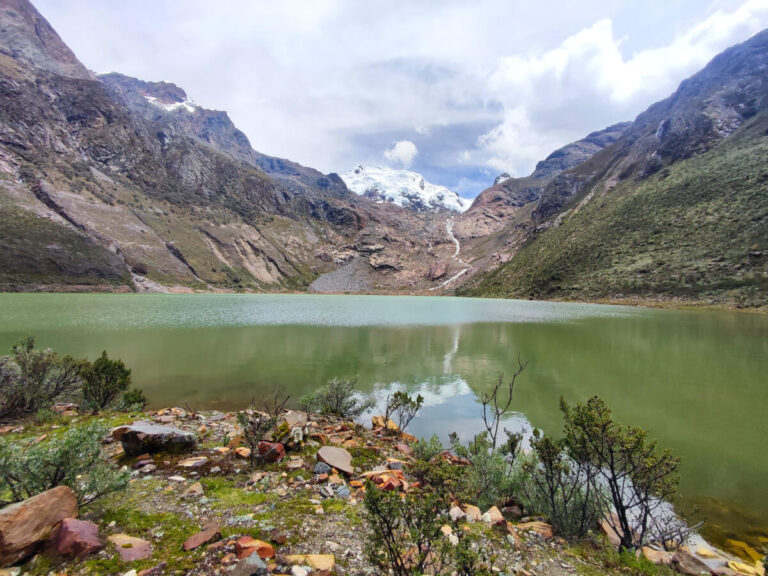
Santa Cruz
The Santa Cruz Trek, near Huaraz, is often considered one of the best hikes in Peru, and although I have yet to do it myself, it was highly recommended by many friends. Based on their stories, this trek offers some of the most incredible views in the Cordillera Blanca.
My plan is to complete this trek in four days, taking a colectivo from Huaraz to Vaqueria, where the trailhead is located. From there, I will start the 55 km adventure towards Cashapampa. There are a couple of lakes on the way to see: Jatuncocha, Morococha, and Arhuaycocha are some of them.
You don’t have accommodation options to sleep on the way. To complete this trek, you need to bring a tent and enough food for all days. The best time to do this trek is from April to November. Honestly, the weather is the main reason why I didn’t do it. I was in Huaraz in January, and it rained heavily every single day. Well, I like to see this as another reason to return to Huaraz.
Huayhuash
The Huayhuash Trek is long and typically takes 8 to 12 days, depending on your pace and route. It has been highly recommended to me by friends as well. It is a big challenge, and I’m looking forward to it because I have never been on such a long trek.
It’s known for being more difficult than other treks due to the length and high altitudes, with passes reaching over 5,000 meters. Proper acclimatization and a good fitness level are essential for this journey.
You can start the Huayhuash Trek from various points, but most people begin at Llamac. To get there, you can take a colectivo or arrange private transport from Huaraz, which serves as the main hub for trekking in the region.
Due to the length of the trek, many hikers choose to go with a guide or organized group for extra support.
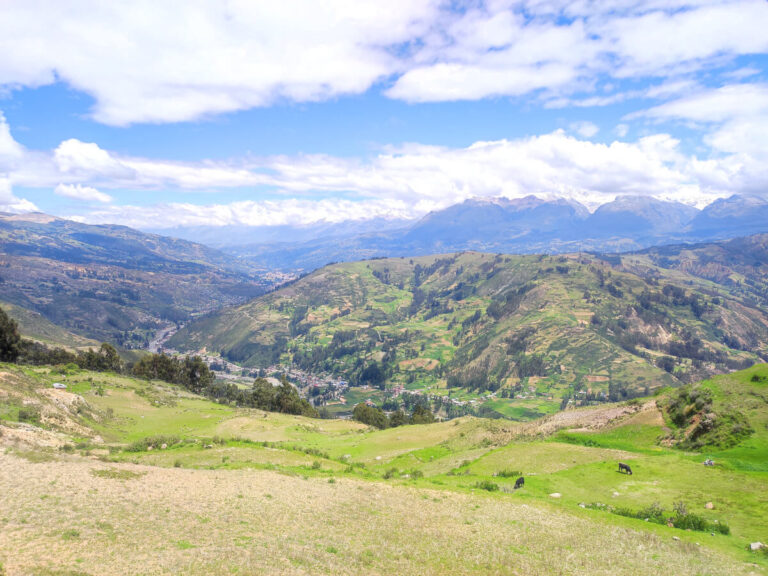
Conclusion
Exploring the best hikes in Peru offers an opportunity to experience the country’s incredible natural beauty, diverse landscapes, and rich history. From high-altitude mountain passes to ancient ruins and lakes, these hikes provide something for people of all levels.
Knowing about these trails helps you plan the perfect adventure, ensuring you make the most of your time in Peru.
Each hike has challenges and rewards, but all share the beautiful Peruvian scenery and cultural heritage. Going for a short day hike or an extended trek will create memories for the rest of your life!!


